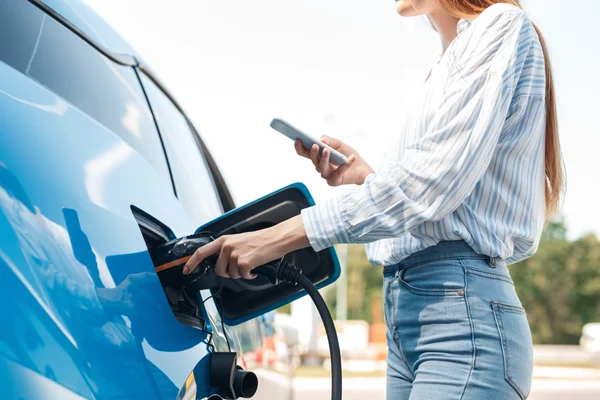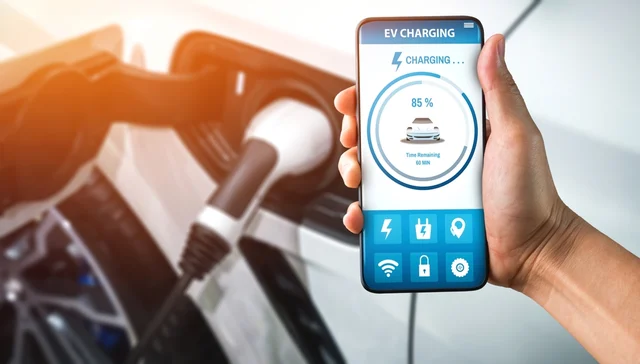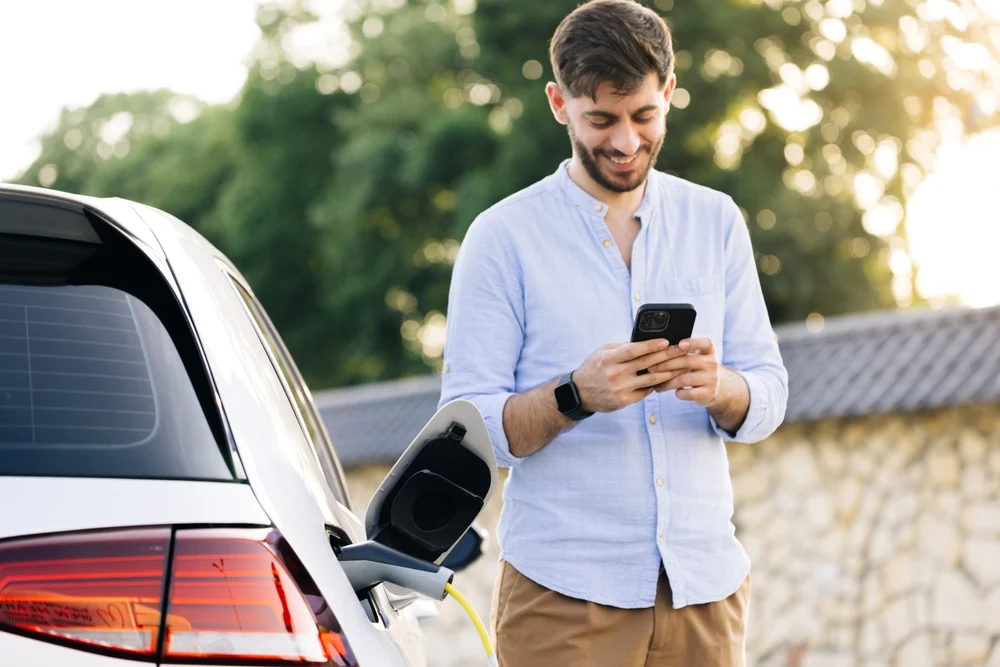As the popularity of electric vehicles (EVs) continues to grow, drivers are finding themselves with more charging options than ever before. While home charging remains the most common choice for many EV owners, public charging facilities are becoming increasingly vital for those who need to charge on-the-go. In fact, recent studies show that 31% of EV drivers frequently rely on public charging spots, highlighting the growing importance of these resources in our daily lives.
Using a public EV charger isn’t complicated, but there are certain steps you need to follow to ensure a smooth charging experience. Whether you’re traveling long distances or simply looking to top off your battery during a quick errand, understanding the basics of public charging can make your journey easier. This article walks you through the four main steps you need to follow when charging your electric car at a public charging station.
What is Public EV Charging?
Public EV charging refers to charging stations that are accessible to anyone, not just the vehicle owner. These chargers can be found everywhere from busy highways to parking lots at retail centers. They come in various forms, from slower Level 2 chargers to ultra-fast DC fast chargers. Understanding the different types of public chargers is key to knowing what to expect when you arrive at a station.
Step-by-Step Guide to Using Public EV Chargers

Step 1: Locate the Charging Cable
At most public charging stations, the charging cable is already attached to the station itself. However, some setups require you to bring your own charging cable, which is usually provided by the car manufacturer and kept in the trunk. It’s important to note that charging cables and connectors can vary depending on the region and the type of charger, so it’s wise to familiarize yourself with the standards used where you live.
Step 2: Connect Your Car to the Charger
Once you’ve located the charging cable, the next step is to connect it to your car. If the cable is built into the charger, simply attach it to your car’s charging port. Most electric cars have their charging ports located near where the fuel cap would be on a traditional vehicle, though some models place the socket under the front badge. Many cars even have separate connectors for regular and fast charging, so if the plug seems unfamiliar, it’s likely due to this distinction. Most cars support fast charging, so if the plug fits, it’s probably compatible. If it doesn’t fit, don’t force it—it’s likely not the correct cable for your car.
If you’re using your own cable, you’ll need to connect it to both the charging station and your car. The cable is usually easy to spot, though some sockets may have protective covers that need to be lifted.

Step 3: Authenticate and Start Charging
After connecting your car to the charging station, the next step is to authenticate yourself to initiate the charging session. This is typically done using a keycard, fob, or a smartphone app, depending on the charging network. Some stations allow you to start charging by simply tapping your debit or credit card. Once the charger recognizes you, the charging process will begin. This is often indicated by lights on the charger and sometimes on the car itself, which may change color or flash in a specific pattern.
While your car is charging, you can monitor the progress on your car’s dashboard, the charging station itself, or through the charging app. Real-time updates can help you keep track of your progress and ensure everything is working smoothly.
Step 4: End the Charging Session
When your car reaches the desired charge level, it’s time to end the session. This is typically done in the same way as starting it—swipe your card or fob again on the charging station, or stop the session via the app. During charging, the cable is usually locked to the car to prevent theft and reduce the risk of electric shocks. Once you’re done, you may need to unlock the cable from your car’s dashboard before removing it.
Finally, unplug the cable and return it to its place on the charger (if it’s built-in) or stow it back in your trunk (if you brought your own). Your EV is now fully charged and ready for your next adventure!
Â
Understanding How EV Charging Works
Now that we’ve covered the basics of using a public charging station, let’s explore how EV charging works in more detail. At its core, all charging stations function similarly—they deliver power to your EV’s battery. However, the speed and efficiency of charging depend on several factors, including the type of current used and the power output of the station.

AC vs. DC Charging
The primary difference between charging stations lies in the type of current they deliver—alternating current (AC) or direct current (DC). AC is what powers most homes and businesses, while EV batteries store energy in DC. Therefore, a conversion must occur during the charging process.
With AC charging, the current is delivered to the car, where it is converted to DC by an onboard converter. DC charging, on the other hand, converts the current to DC at the charger itself, allowing it to bypass the car’s onboard converter and deliver power directly to the battery. This makes DC chargers significantly faster, with some providing up to 350 kW of power, enabling an EV to charge in as little as 15 minutes. DC fast chargers are especially valuable for long-distance travel, offering quick recharges on the road.

Why Use Public Charging Stations?
While home charging is convenient and sufficient for most daily commutes, public charging stations offer unparalleled flexibility. Unlike gas stations, which you visit only when necessary, EV charging can be opportunistic—you can charge your car whenever it’s convenient. For instance, if you’re running errands, you might decide to plug in while grocery shopping, ensuring your battery stays topped off without disrupting your routine.
This convenience has led to increased reliance on public charging. Today, 26% of EV drivers regularly charge at supermarkets, 22% at shopping malls, and 31% in public or commercial locations.
Finding Public Charging Stations
Unlike gas stations, which are ubiquitous and easy to locate, public charging stations can be harder to find. The best way to locate these stations is by downloading a charging station finder app on your smartphone. These apps provide real-time information about nearby chargers, including their speed, availability, and cost. While there are many options available, they all share similar features, making it easy to compare and choose the right station for your needs.
Alternatively, general map apps like Google Maps and Apple Maps can also display charging stations, though they may lack the detailed real-time data offered by dedicated charging apps.
Payment Options for Public Charging
Unlike gas stations, where payment is handled by attendants, public EV charging is entirely self-service. This means you’ll need to manage your own payments, and cash transactions are rarely an option. There are two primary ways to pay for EV charging:
The first is through an account with a charge point operator or mobility service provider. In this case, you’ll receive an RFID card or fob that allows you to access public charging stations. Charging costs are typically billed to your account afterward.
The second option is to pay directly via contactless debit or credit cards or through the charging app. While this offers greater flexibility, some operators may charge higher fees for card payments, and tracking your expenses can be less straightforward.

Public EV charging may feel intimidating at first, but it’s designed to be user-friendly and adaptable to your lifestyle. We hope this article has clarified the process and addressed any concerns you may have had about using public charging stations.
If you’d like to learn more about EV charging or are considering purchasing your first EV, check out our comprehensive charging guide.
SHAOXING KEQIAO FANEVER IMPORT AND EXPORT CO., LTD , https://www.sxfanever.com
